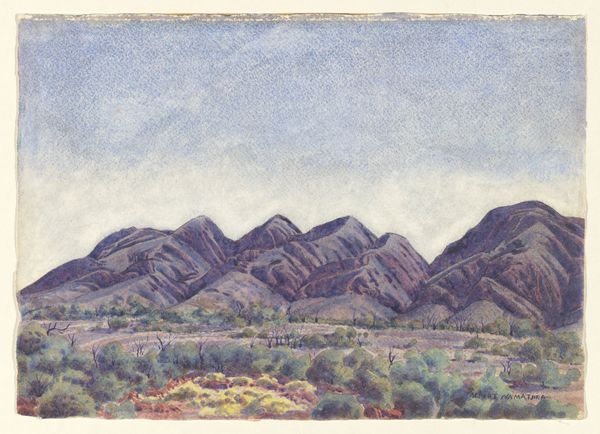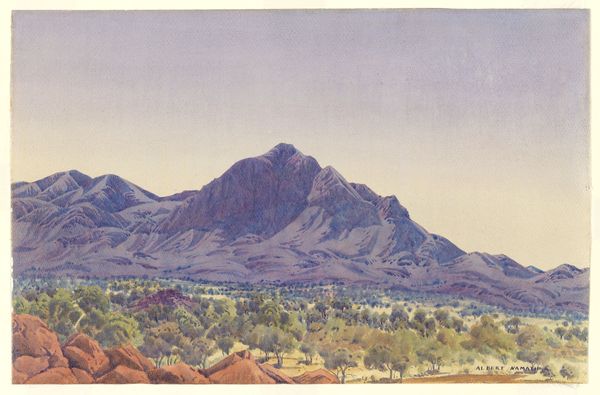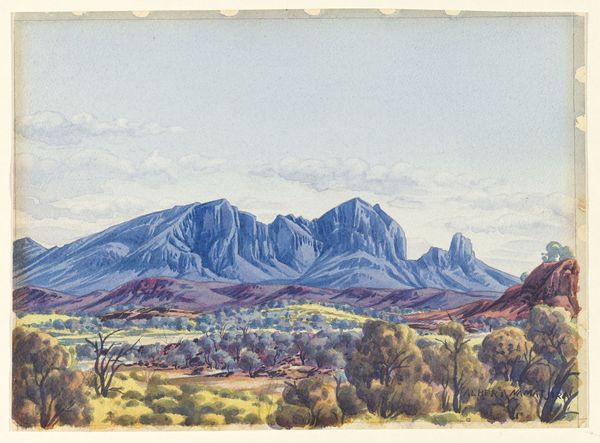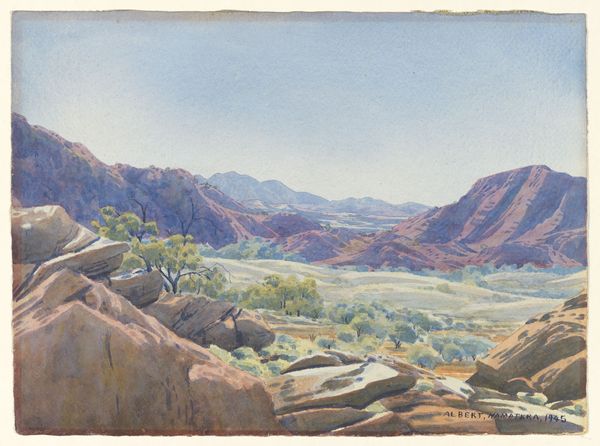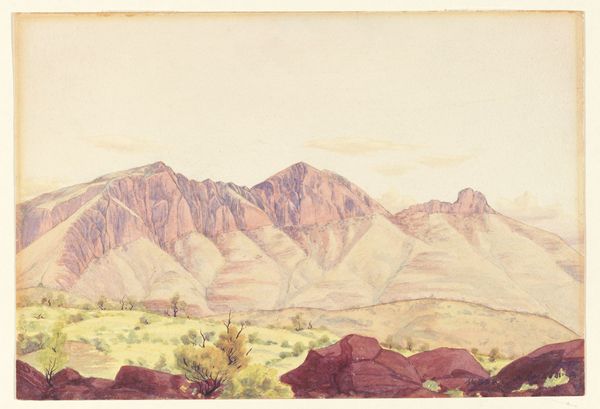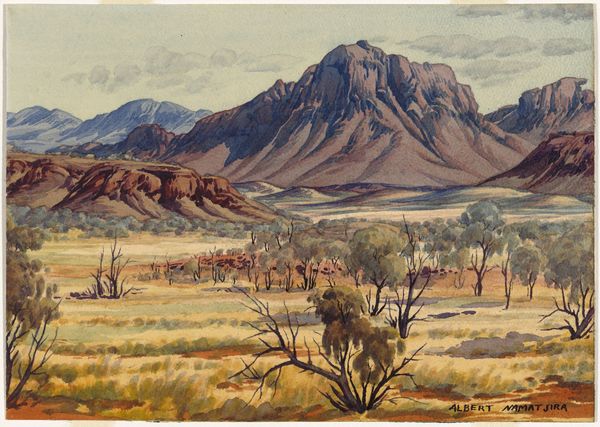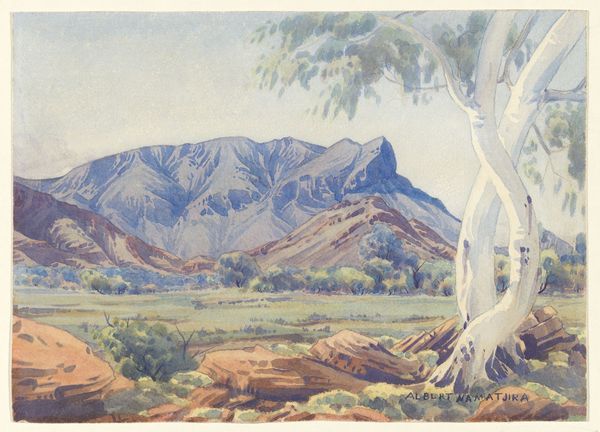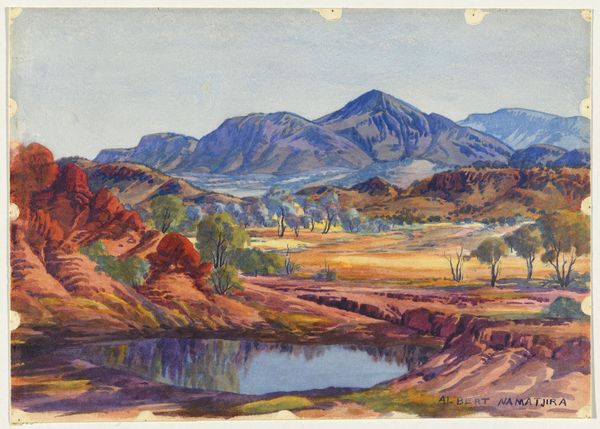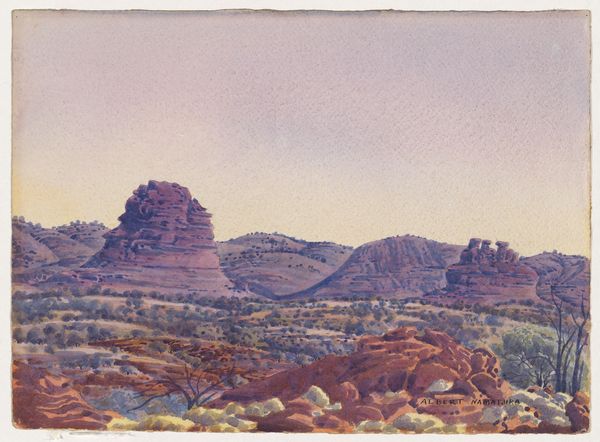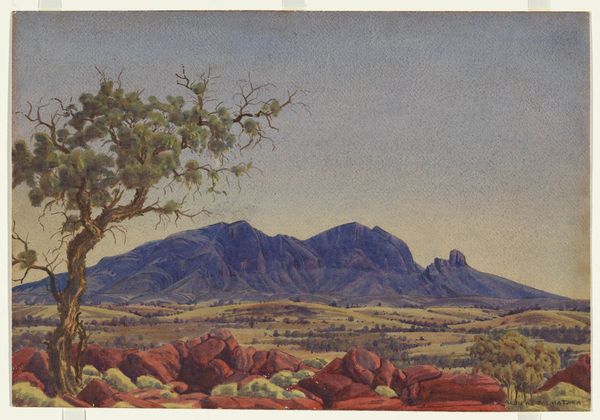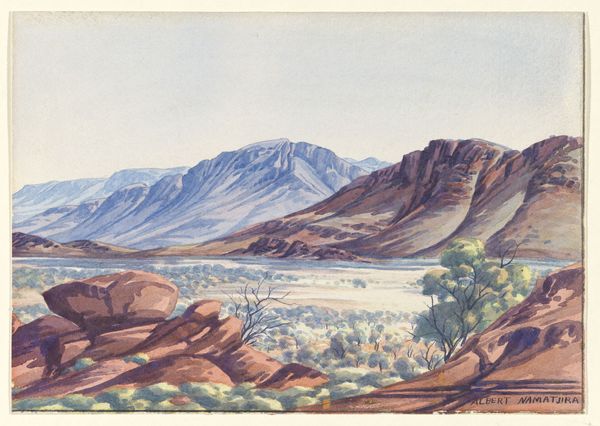
painting, watercolor
#
painting
#
landscape
#
watercolor
#
watercolor
Copyright: Albert Namatjira,Fair Use
Curator: Albert Namatjira painted "Gosses Bluff" in 1945. It's a watercolor painting. Editor: Immediately striking is the horizontal composition—the land sprawling, capped by the stark mountain range, all under a sky graded with blue. It's so still, serene even. Curator: Serenity maybe, but I see that stillness through the lens of the Hermannsburg School movement, where Namatjira gained international recognition. We can't ignore how the commodification of Aboriginal art facilitated dialogues about sovereignty and cultural expression at that moment. He trained under Rex Batterbee, a white artist, and the demand for these landscapes speaks to an external, romantic view of Aboriginal land. Editor: That contextual backdrop is interesting, but consider how Namatjira uses watercolor to capture the light and texture of the Australian outback. See how the layering of washes creates depth, simulating atmosphere—and the precise brushwork to create such palpable mountain silhouettes? Curator: Certainly, the illusion is skillful. But consider also that he's working within an art market framework deeply enmeshed with colonial expectations. Were collectors necessarily appreciating an "authentic" Aboriginal experience or something else? What kind of Aboriginality did that collector want? Editor: But look at the nuances he coaxes from his material. The hues of the rock and foliage mirror one another, echoing that the landscape is cohesive, the different colors still a landscape. Even without the mountains, you could tell that you are within an Australian setting through the colors he choses. Curator: And these scenes offered opportunities and complicated constraints for Namatjira, personally and professionally. He aimed to provide for his community, creating social and political capital, not just selling landscapes. The romantic gaze upon indigenous painting overlooks a lot of complexity within those economic dynamics. Editor: I concede, this painting’s cultural capital comes from various factors and the historical moment helps give a structure and reference point for it. Ultimately, it’s the harmonious arrangement of space, texture and color that leaves a lingering sense of calm. Curator: Yes, but acknowledging its deeper layers reveals what's concealed by its beautiful, even simple, design. Both are important for appreciating his art and legacy.
Comments
No comments
Be the first to comment and join the conversation on the ultimate creative platform.
